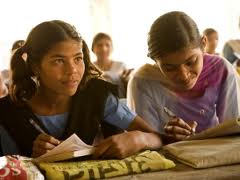 Hillary Clinton changed the way Americans think about women in politics, and new Northwestern University research suggests that an affirmative action law in India is doing the same for Indian women. The research, published Jan. 12 in the journal Science, focused on the long-term outcomes of a law that reserved leadership positions for women in randomly selected village councils in India.
Hillary Clinton changed the way Americans think about women in politics, and new Northwestern University research suggests that an affirmative action law in India is doing the same for Indian women. The research, published Jan. 12 in the journal Science, focused on the long-term outcomes of a law that reserved leadership positions for women in randomly selected village councils in India.
The law has led to a direct role model effect and is changing the way the girls as well as their parents think about female roles of leadership and has improved their attitudes toward higher career aspirations and education goals for women, said Lori Beaman, an assistant professor of economics at the Weinberg College of Arts and Sciences at Northwestern. Results of the study show that affirmative action laws can help create positive role models by opening opportunities that were previously unavailable to a group.
“India is definitely a place where women are constrained in their opportunities,” said Beaman, one of the authors of the study. “This law gave Indian women, at the village level, a chance to demonstrate that they are capable leaders.” Beaman’s research team collected data in West Bengal between 2006 and 2007 on 8,453 male and female teenagers and their parents in 495 villages. The law was implemented in that region starting in 1998 and from that time a village council spot could have been reserved for a female leader once, twice or never.
Here’s a glimpse at how the gender gap narrowed in villages with two terms of female leadership versus the villages that never had a female leader:
- Gender gap in aspirations for their children’s career and education closed by 25 percent in parents
- Gender gap in career and education aspirations closed by 32 percent in adolescents
"The decline in the gender gap is entirely driven by an increase in girls’ aspirations, not by a decrease in boys," Beaman said. In a change of behavior, adolescent Indian girls were more likely to be attending school and spent less time on household chores in the villages that reserved political positions for women.
“There weren’t any concurrent changes in education infrastructure or career options for young women during this time,” Beaman said. “The changes in behavior among adolescents can be contributed to the role model effect of the women leaders.”
The results of this study support the idea that quotas and affirmative action in response to the underrepresentation of women in politics and perhaps in other areas, such as science and the corporate boardroom, is a positive action that creates influential role models and pays off in the long run, Beaman said.Other authors of the study are: Esther Duflo, department of economics at Massachusetts Institute of Technology; Rohini Pande, Harvard Kennedy School, Harvard University; and Petia Topalova, the International Monetary Fund.
